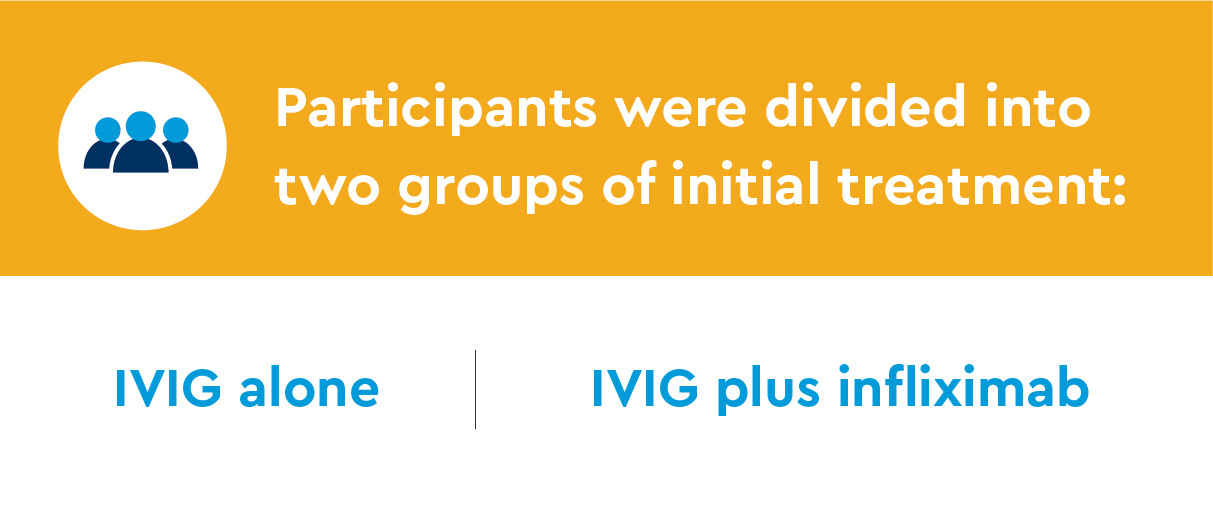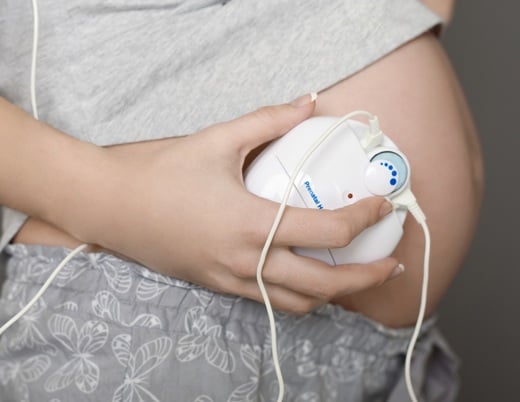Key takeaways
-
There has not been consensus in medical literature about dual treatment for patients with MIS-C at high risk for poor cardiac outcomes.
-
A retrospective cohort study found IVIG plus infliximab for MIS-C decreased need for additional therapy, improved cardiac outcomes, decreased ICU length of stay, and more rapid decline in C-reactive protein.
-
Children's Colorado updated its MIS-C care pathway to recommend the dual therapy for all patients highly suspected or diagnosed with MIS-C.
Research background: MIS-C, a new rare condition associated with COVID-19
The first case of multisystem inflammatory syndrome in children (MIS-C) after COVID-19 infection or exposure was recorded in April 2020. As of January 2022, the Centers for Disease and Control (CDC) reported 6,851 confirmed U.S. MIS-C cases and 59 deaths. Get the latest CDC numbers.
MIS-C is a shock-like condition that can cause inflammation in the heart, lungs, kidneys, brain, skin, eyes and gastrointestinal organs. It shares some clinical symptoms seen in Kawasaki disease (KD).
As such, MIS-C treatment has been similar to KD treatment, which is the initial use of high-dose intravenous immunoglobulin (IVIG) and aspirin. KD patients at risk for poor cardiac outcomes in other centers may also receive corticosteroids for two to three weeks in addition to IVIG. At Children’s Hospital Colorado, high-risk KD patients are routinely treated with infliximab plus IVIG, which has reduced the need for additional therapy and the length of treatment.
There has not been consensus in medical literature about dual treatment for patients with MIS-C at high risk for poor cardiac outcomes. Patients with MIS-C present differently than KD; they have higher levels of systemic inflammation and more rapid multiorgan dysfunction.
A multidisciplinary team of pediatric cardiologists and infectious disease specialists at Children's Colorado studied outcomes in MIS-C patients initially treated with IVIG alone, compared to those who received IVIG plus infliximab. They hypothesized that adding immunomodulatory medications to initial IVIG treatment could be beneficial.
Research methods: review of MIS-C treatment with IVIG alone and IVIG plus infliximab
The team included any patient diagnosed with and treated for MIS-C based on CDC criteria between April 1, 2020 and Feb. 28, 2021 at Children’s Colorado. Data from the electronic medical record was used to perform a retrospective chart review, which included:
- Sociodemographic information
- Clinical characteristics
- Laboratory and cardiac evaluations
- Medications
- Outcomes

Definition of initial therapy: the earliest administration of immunomodulatory medication(s) including IVIG, biologic agents (i.e., infliximab) and/or corticosteroids.
Note: Children's Colorado updated its MIS-C care guidelines in December 2020 to recommend initial therapy with IVIG plus infliximab for patients with right coronary artery and/or left anterior descending artery, coronary artery dilation with Z score 2.0, left ventricular dysfunction (LVD), ejection fraction <55% and/or hypotension.
Outcomes
- Primary: need for additional immunomodulatory therapy
- Secondary: hospital length-of-stay, intensive care unit length-of-stay, new development or worsening LVD, new vasoactive medication requirement, duration of vasoactive medications, change in inflammation as measured by C-reactive protein (CRP) and need for diuretics
Research results: analysis of MIS-C treatment, subgroup analysis for timing of infliximab

Six received immunomodulatory medications during initial therapy in addition to IVIG with or without infliximab and one received corticosteroids for pharyngitis two and four days prior to MIS-C therapy.
Two groups of patients were created and reviewed:
- Patients who received IVIG alone
- Patients who received IVIG plus infliximab
|
Type of MIS-C therapy |
IVIG alone |
IVIG plus infliximab |
|
Number of patients receiving therapy |
20 |
52 |
|
Initial admission to ICU |
2 |
29 |
|
Abnormal echocardiogram |
8 |
37 |
|
Required additional therapy |
13 |
16 |
|
Median length of stay (days) |
4.5 |
3.7 |
|
Median ICU length of stay (days) |
3.3 |
1.8 |
|
New or worsened LV dysfunction |
4 |
2 |
|
New vasoactive medication requirement |
3 |
2 |
|
Diuretics required |
10 |
23 |
|
Median change in C-relative protein (CRP) (percent) pre-treatment to 24 hours after treatment began |
0 |
-46 |
|
Median change in CRP (percent) 48 hours after treatment began |
-5 |
-70 |
|
Median time to fever reduction (days) |
3 |
2 |
|
Median vasoactive duration (hours) |
36 |
19 |
A three-group subanalysis investigated potential effects of infliximab administration timing relative to IVIG administration on outcomes:
- 20 received IVIG-Alone
- 16 received IVIG-followed-by-infliximab
- 36 received infliximab-followed-by-IVIG
Subanalysis results were similar to the two-group analysis, except for a statistically significant difference in the need for diuretics:
- 10 IVIG alone
- 12 IVIG followed by infliximab
- 11 Infliximab followed by IVIG
Research discussion and conclusion: IVIG plus infliximab leads to greater improvements in cardiac outcomes

Initial, intensified IVIG plus infliximab therapy compared to only IVIG therapy was associated with improvement in several outcomes:
- Decreased need for additional therapy
- Shortened median ICU length-of-stay
- Decreased development of LV dysfunction
- More rapid inflammation resolution
Other key findings
- More rapid improvement in CRP in patients who received IVIG plus infliximab
- Demonstrated improvement in cardiac outcomes in patients who received IVIG plus infliximab
- Clinically significant difference favoring use of infliximab
Potential benefits of infliximab over corticosteroids
- Single-dose administration, no need for taper
- Long-lasting anti-inflammatory
- Excellent safety profile (only one adverse effect in study, except one patient developed a rash)
Future randomized controlled trials are needed to confirm study findings and to compare initial therapy with IVIG alone, IVIG plus infliximab, and IVIG plus corticosteroids. Comparative effectiveness trials may also provide insight into the best initial MIS-C therapy.
Read the American Heart Association Statement: SARS-CoV-2 Infection and Associated Cardiovascular Manifestations and Complications in Children and Young Adults: A Scientific Statement From the American Heart Association
Featured Researchers

Samuel Dominguez, MD, PhD
Pediatric infectious disease specialist
Pediatric Infectious Disease Program
Children's Hospital Colorado
Professor
Pediatrics-Infectious Diseases
University of Colorado School of Medicine

Suchitra Rao, MBBS, MSCS
Pediatric infectious disease specialist
Pediatric Hospitalist Services
Children's Hospital Colorado
Associate professor
Pediatrics-Pediatric Hospital Medicine
University of Colorado School of Medicine





 720-777-0123
720-777-0123










